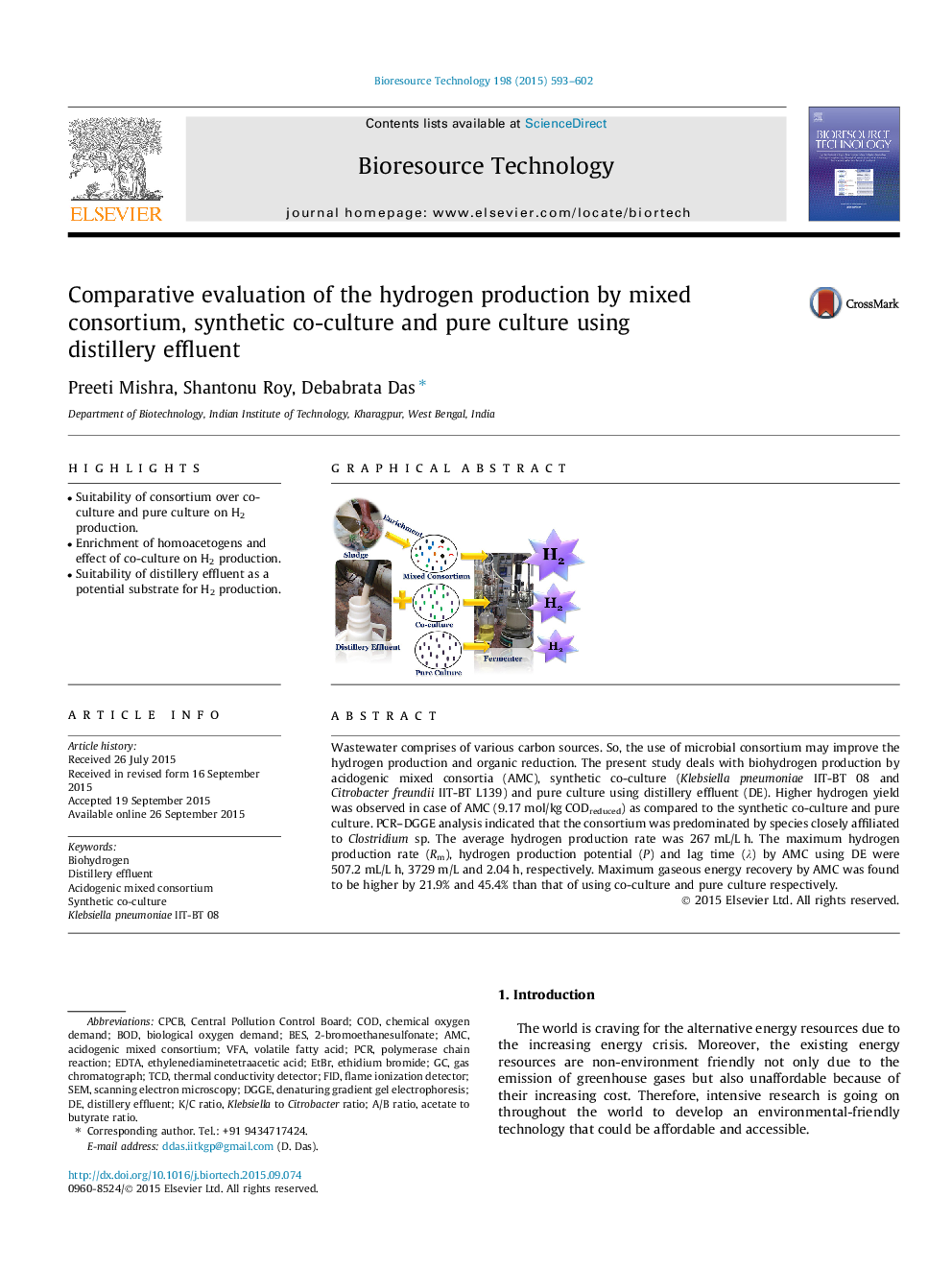| کد مقاله | کد نشریه | سال انتشار | مقاله انگلیسی | نسخه تمام متن |
|---|---|---|---|---|
| 679441 | 1459945 | 2015 | 10 صفحه PDF | دانلود رایگان |
• Suitability of consortium over co-culture and pure culture on H2 production.
• Enrichment of homoacetogens and effect of co-culture on H2 production.
• Suitability of distillery effluent as a potential substrate for H2 production.
Wastewater comprises of various carbon sources. So, the use of microbial consortium may improve the hydrogen production and organic reduction. The present study deals with biohydrogen production by acidogenic mixed consortia (AMC), synthetic co-culture (Klebsiella pneumoniae IIT-BT 08 and Citrobacter freundii IIT-BT L139) and pure culture using distillery effluent (DE). Higher hydrogen yield was observed in case of AMC (9.17 mol/kg CODreduced) as compared to the synthetic co-culture and pure culture. PCR–DGGE analysis indicated that the consortium was predominated by species closely affiliated to Clostridium sp. The average hydrogen production rate was 267 mL/L h. The maximum hydrogen production rate (Rm), hydrogen production potential (P) and lag time (λ) by AMC using DE were 507.2 mL/L h, 3729 m/L and 2.04 h, respectively. Maximum gaseous energy recovery by AMC was found to be higher by 21.9% and 45.4% than that of using co-culture and pure culture respectively.
Figure optionsDownload as PowerPoint slide
Journal: Bioresource Technology - Volume 198, December 2015, Pages 593–602
